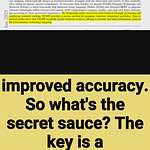By focusing on separator tokens, SepLLM, proposed in this paper, cuts LLM memory needs in half without losing performance.
SepLLM accelerates LLMs by identifying that separator tokens like periods and commas receive disproportionately high attention, allowing compression of segment information into these tokens.
-----
https://arxiv.org/abs/2412.12094
🤖 Original Problem:
LLMs face significant computational and memory challenges due to the quadratic complexity of self-attention, especially when processing long sequences.
-----
🔍 Key Insights:
→ Separator tokens (periods, commas) receive unusually high attention scores compared to semantic tokens
→ These separators naturally compress information from their surrounding text segments
→ Initial tokens and neighboring context are crucial for maintaining model performance
-----
⚡ Solution in this Paper:
→ SepLLM introduces a sparse attention mechanism that only retains three types of tokens: initial tokens (attention sinks), separator tokens, and neighboring tokens
→ The system compresses segment information into separator tokens during both training and inference
→ For streaming applications, it uses four specialized cache blocks: Initial Cache, Separator Cache, Past Window Cache, and Local Window Cache
→ The framework integrates with both training and inference, unlike previous approaches that only work during inference
-----
📊 Results:
→ Reduces KV cache by over 50% on GSM8K-CoT while maintaining performance
→ Processes sequences up to 4 million tokens while preserving language modeling capabilities
→ Achieves 28% reduction in computational costs and 26% faster training time
------
Are you into AI and LLMs❓ Join my daily AI newsletter. I will send you 7 emails a week analyzing the highest signal AI developments. ↓↓
🎉 https://rohanpaul.substack.com/










